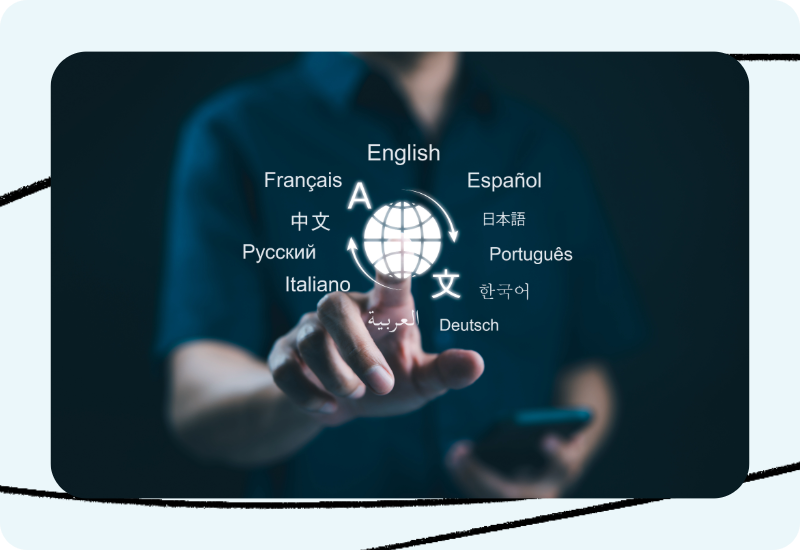Are you translating high volumes and looking for ways to do it faster and more cheaply? If so, you’re probably looking at neural machine translation (NMT).
Yet, all too often companies dive into NMT implementations without a clear plan, only to end up with clunky setups that disrupt workflows, frustrate teams, and produce subpar results. What looked like a cost-saving move turns into more rework, more confusion, and sometimes even more spending.
The root cause? Poor implementation and lack of alignment between tools, content, and people.
At BIG, we take a practical, results-driven approach to implementing machine translation. The focus isn’t on using the most advanced tools for the sake of it, but on making them work in ways that improve efficiency, quality, and cost-effectiveness. With the right setup, high-quality data, and well-defined workflows, NMT becomes a reliable and impactful part of a broader translation strategy.
A lot of our customers ask how NMT works, where it fits best, and how to start using it effectively within their enterprise. Here are the four key factors we’ve found to be critical for making NMT work the way it should.
Choosing the Right Engine
The starting point for rolling out a machine translation service is choosing the right engine. However, there are many, many choices out there, and the features and benefits vary.
Engines vary widely in performance depending on the language pairs, subject matter, and even tone of the content—what works well for legal text in English and Spanish will likely fall short for creative content in Japanese and Korean.
Some prioritize accuracy and nuance, while others focus on speed or security, which are both critical factors if you’re handling sensitive data in an industry like insurance or legal. With dozens of engines available today, from big names like Google, DeepL, and Microsoft to specialized players, making the right choice means balancing features with your specific use case.
You’ve got open-source neural machine translation models, cloud-based solutions, and highly specialized engines built on large language model (LLM) infrastructure. These tools differ in their capabilities and use cases—some excel at generic content, while others are fine-tuned for domains like healthcare, legal, or finance.
For example, open-source engines like Google Translate are not customized for any specific domain, and they are trained with public content. That also means they are not data-secure for your content. On the other hand, on-premise solutions can be highly customizable, and the data is locked down tight.
For enterprises wanting to do more with AI translation, especially those in domains like healthcare, financial, and life sciences, the focus should be on creating secure, domain-trained engines that are not only customizable but also compliant with regulatory standards.
At BIG, we still favor neural machine translation models over large language models (LLMs). Our research shows that a customized machine translation process consistently outperforms LLMs for translation workflows. LLMs require significant fine-tuning and testing to achieve the quality standards we need, particularly for complex, domain-specific content. We’re maintaining a custom MT-first approach while benchmarking LLM performance and adding AI features where and when it makes sense.
Training Your Engine with the Right Data
Engine training with great data is extremely important for successful NMT. NMT output is only as good as its training data, and the idea of garbage in, garbage out is as relevant as ever.
Accurate, well-translated, and domain-relevant multilingual content free of bias and inconsistencies is essential for training engines to produce reliable and contextually correct translations. The type of text chosen for training must be highly specific to the industry in question. For instance, an NMT engine for life sciences should be trained specifically on regulatory or clinical trial documents if that is the user’s domain, rather than general medical texts.
Also, given that machine learning requires a large body of examples for its training, rare or less-commonly spoken languages will be at a disadvantage. With less data available to build a usable engine, the translations generated will be less accurate and less fluent than those for widely spoken languages.
This is where LSPs like BIG have a real edge—we work with large, carefully curated datasets, including translated regulatory content and validated glossaries. This helps each engine stay context-aware and aligned with industry requirements.
Making a Clear Plan for Post-Editing
In many cases, raw NMT isn’t of high enough quality for the business need. While NMT engines, when highly trained, can get pretty close, there are inevitably errors in terminology, understanding of nuance, or style. This is when enterprises engage a professional called a post-editor to review and revise the content.
Post-editing (PE), then, is the process of improving machine-translated content to meet specific quality goals. It ranges from light PE, which corrects major errors for basic readability, to full PE, where tone, style, and accuracy are refined to match human translation. The level of edit varies based on customer needs, so defining “quality” is essential, whether it’s speed, clarity, or brand consistency—some translations need only a quick review, while others call for a deeper edit. A clear plan should set those quality standards, outline review steps, and define when and how PE is applied.
A solid plan also includes timelines, review steps, and clear criteria for when post-editing is needed.
Equally important is having the right expertise. Post-editing isn’t just about language skills, it requires familiarity with machine output and the types of errors that can occur, subject matter knowledge, and attention to style and consistency. With a highly trained NMT engine and skilled post-editors, quality can exceed what humans alone can do at a lower cost.
Investigate Where to Add AI Capability
While we’ve explained that NMT still achieves the best results for most enterprises and domains, large language models are offering features that can be integrated to improve quality, speed, and workflow.
At BIG, we add LLM functionality to support the foundational work being done by NMT, focusing on targeted enhancements that improve quality, speed, and efficiency across workflows.
One area where AI is already delivering results is Automated Post-Editing (APE). This step uses machine learning to refine raw translations before they reach a human reviewer, boosting output quality by up to 43 percent and reducing editing time by as much as 40 percent in certain projects.
We also apply Quality Estimation (QE), an AI-powered scoring system that predicts the reliability of machine output on a scale from 0 to 1. This allows us to flag high-risk segments early, route them to human linguists, and streamline the overall review process.
By integrating LLM capabilities to support and extend the work of the neural engines, we solve customer problems around quality, speed, and cost at the next level.
How to Get Started with NMT
For organizations exploring machine translation, here are the five steps you’ll want to take:
- Define your translation use case, goals, and objectives.
Think about what types of content are a good match for NMT. High-volume, repetitive, or technical materials often work well. Content that’s creative, legal, or highly sensitive? That’s usually best handled by professional human translators. Similarly, is your goal to translate much higher volumes, reduce costs, or is it to go faster? - Audit your existing data.
Take inventory of what you already have—quality translations, translation memories, glossaries. If they’re solid, they can be used to train a custom engine that’s much more effective than a generic one. - Select the right NMT model.
Choosing the right model depends on your needs. Open-source or commercial? Generic or custom-trained? In regulated industries, where data privacy and compliance are non-negotiable, it’s especially important to choose secure tools built to support sensitive translation workflows. - Plan your quality workflow. Think through how the output will be reviewed. Will it need light post-editing or a full revision? Who signs off on the final content? Clarity here helps avoid slowdowns later.
- Evaluate results and iterate. Continuously monitor the quality of the machine-translated output and identify areas for improvement. Use feedback from post-editing and user reviews to refine the machine translation process and improve the quality of the output over time.
And if all this seems like a lot to handle on your own, then you can partner with a trusted LSP who has expertise in machine translation deployments for your industry.
At BIG, we help our customers take full advantage of NMT without compromising quality or safety. We specialize in helping customers build private NMT engines trained on their data, enabling better quality control and enhanced confidentiality.
Whether you’re piloting NMT for internal documents or scaling multilingual translation workflows globally, we will guide you every step of the way. Contact us here to chat about implementing AI-assisted translation for your enterprise.





